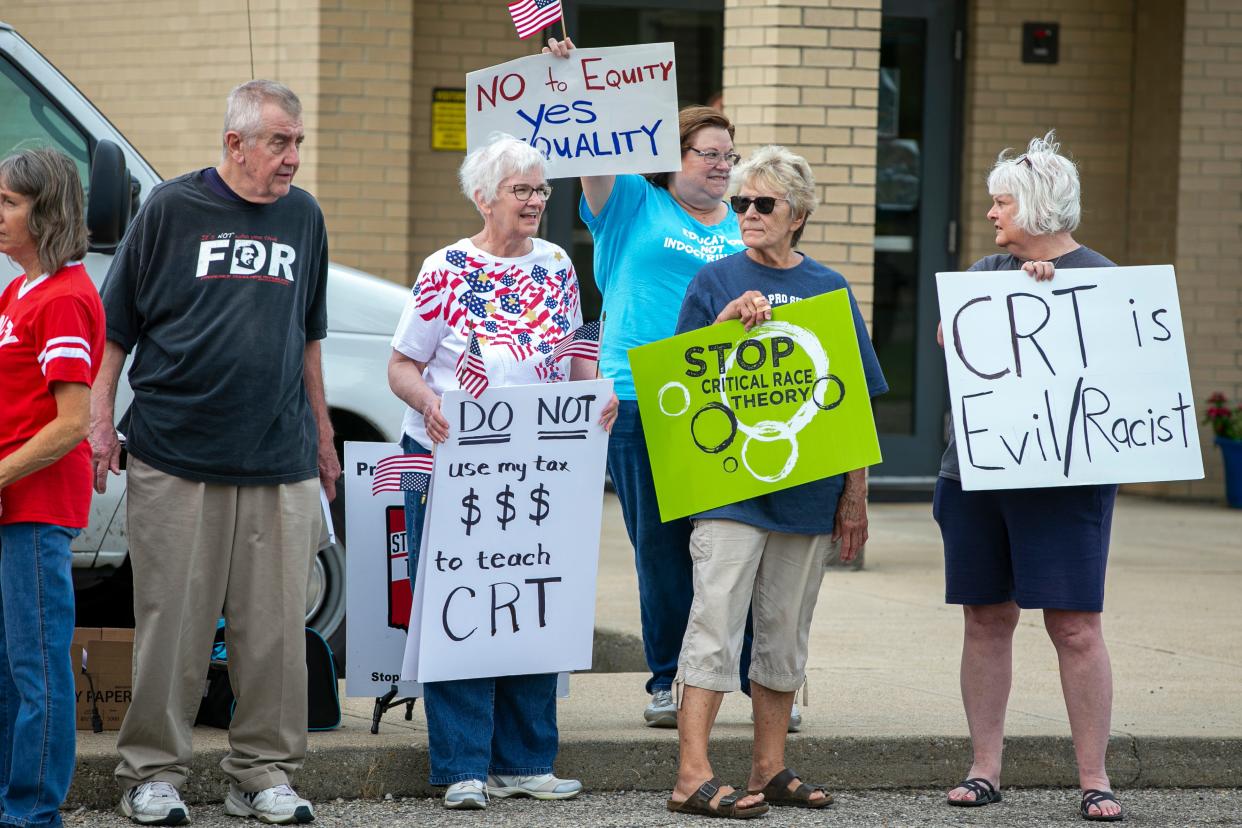From the editor: School sting video's claim of critical race theory a low point in the culture war

Is critical race theory being taught in our schools?
Educators say no. Some parents and even school board members say yes, pointing to plans for Diversity Day at Turpin High School and student artwork hanging in the hallways in the Lakota school district.
The latest skirmish in the culture war playing out in our schools came in the form of a sting operation conducted by Accuracy in Media, a media watchdog organization founded in 1969 that supported the war in Vietnam and blamed news coverage for the growing antiwar sentiment.
Our reporting. Your stories: Subscribe now for unlimited access to The Enquirer's award-winning local journalism.
Accuracy in Media went undercover in several area schools, including buildings in Mason and Cincinnati Public, posing as parents. Teachers and administrators, who said they did not know they were being recorded, were asked about teaching topics such as diversity and racial equality.
Critical race theory, specifically, was not mentioned. But that didn’t get in the way of Accuracy in Media’s predetermined conclusion.
"Cincinnati educators will teach CRT, ‘just call it something else'," claimed the headline on the group’s website.
There’s a lot to unpack here.
Confusion and fear surround critical race theory
Let’s first address Accuracy in Media’s tactic of having reporters pose as parents to make secret recordings. That’s unethical and a practice reporters for The Enquirer simply do not partake in.
Misrepresenting ourselves is a violation of our company’s principles of ethical conduct, which states: We will be honest in the way we gather, report and present news.
If you watch the video, you’ll notice two things. First, the production is sensationalized. Second and more concerning, you can see the baiting nature of the questions. The interviews were designed to feed into the confusion and fear surrounding critical race theory, demonstrating how the term has become weaponized in the debate over what is being taught in our schools.
Read more: Forest Hills parents file lawsuit against district's "culture of kindness" resolution.
In The Enquirer’s reporting on the Accuracy in Media video, we attempted to cut through that confusion with what we call a “nut graph,” a paragraph that adds context and clarity for complicated topics. Here’s how our education reporter Madeline Mitchell tackled the challenge:
It seems no one can agree on critical race theory. Educators across the country insist it is not taught outside of college courses, and those against the theory claim it (or concepts similar to CRT) has infiltrated K-12 classrooms and harms students in the process. Members of the latter group have sought to prove the theory's influence in education over the last several years, often producing and sharing videos similar to the one recently released by Accuracy in Media.
In these conversations, CRT, a legal framework that claims racism is a systemic issue rather than an individual bias, often is conflated with other now-controversial terms such as diversity, inclusion, equity and anti-racism. The murky, fluid definition for the concept has fed into the political divide in American education and often leaves each side convinced the other is up to no good.
So let’s go back to the question I asked at the beginning of this column. Is critical race theory being taught in our schools?
My answer: We are asking the wrong question. Rather than frame the debate with a politicized term that means different things to different people, we should simply ask, what IS being taught in our schools?
Educators should have nothing to hide
Mason was particularly transparent in its response to the Accuracy in Media report. Spokesperson Tracey Carson told The Enquirer the district does not teach critical race theory, "nor do we teach it in practice while calling it something else."
Carson said the district shares its curriculum and instructional materials regularly and recently held an in-person Family Academy that allowed families and community members to review course materials.
I think that’s the right approach, one that other districts would be wise to follow. Hide nothing. Be unapologetic for teaching our children age-appropriate lessons about diversity and our country’s struggles with racial equality. And if we as parents and caregivers have concerns, let’s keep the conversation focused on specific elements of the curriculum. Dismissing it all as “critical race theory” only hurts our children – and the health of our society.
The Enquirer remains committed to covering this important topic. Do you agree with our explanation of critical race theory and how the term often is misused? As always, I value your suggestions and feedback.
Enquirer Executive Editor Beryl Love writes a biweekly column that takes you behind the scenes at The Enquirer. Occasionally, he shares his thoughts on local issues, particularly as they pertain to a free press and open government. Email him at blove@enquirer.com. He can’t respond personally to every email, but he reads them all.

This article originally appeared on Cincinnati Enquirer: Beryl Love: School video claim of critical race theory low point

